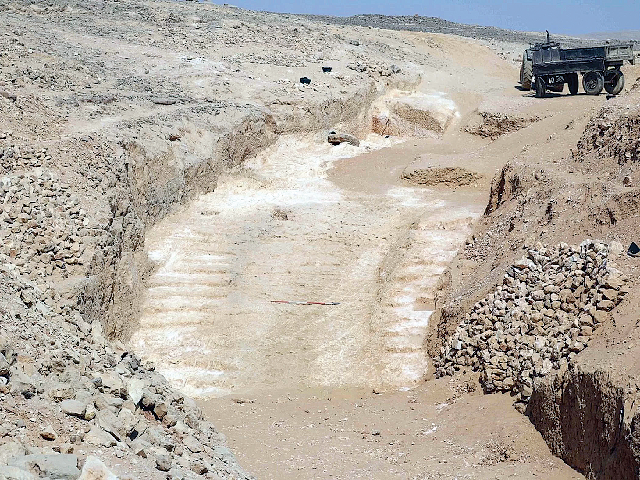The Ramp at Hatnub Quarry: No Solution for Pyramids
Keywords:
Hatnub, Ramp, Pyramid constructionAbstract
Certain features of the ramp first uncovered by the IFAO/University of Liverpool team in 2015 at the Old Kingdom alabaster quarry at Hatnub have been heralded as a model for ramps used in construction of the Great Pyramid of Giza. These features include a steep slope of up 20% (11⁰), inclined stairways on both sides and post holes at regular intervals. The archaeologists hypothesize that these features allowed the haul team to be split into two groups, one hauling upslope with a direct pull, and the other downslope on ropes passed around the posts “acting as pulleys”, thus enabling a steep slope to be used. This paper is based on the physics of various arrangements and demonstrates that the hypothesis is untenable as the posts would have acted as bollards and provided no mechanical advantage. The posts were necessary because of the problems large haul teams would have had negotiating the curvature of the ramp. Interesting as the features at Hatnub are, they are unnecessary and undesirable on the ramps that would have been required for pyramid construction, and the hypothesis should be rejected.
Downloads




